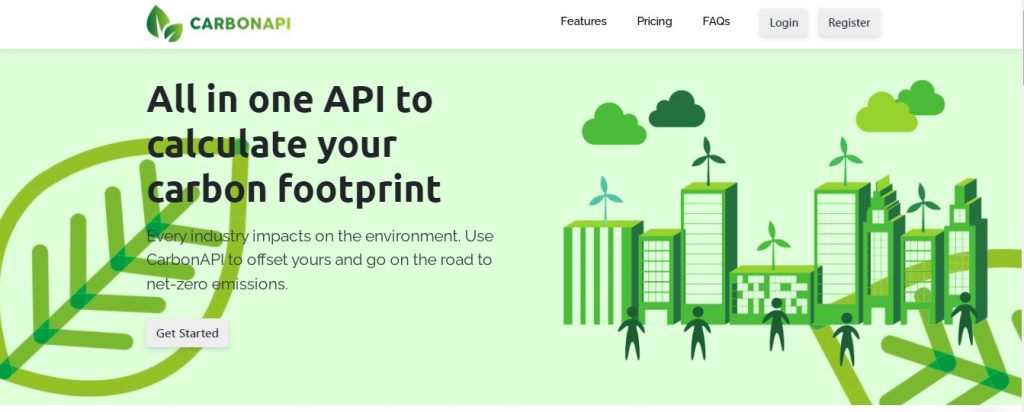Do you want to find a way to measure the carbon footprint of real estate? In this post, we’ll recommend a carbon calculator API.
This summer has seen several extreme weather events, including heatwaves, droughts, and floods. Climate change has had and will continue to have a significant influence on human life. However, there are still many undiscovered options for mitigating the impact.

For many in the real estate industry, the focus has always seemed to be cost rather than the source of our man-made carbon footprint. They have witnessed increasing sea levels and harsh weather occurrences for years, putting property assets in danger. Volatility in the insurance sector has been influenced by economic and physical changes, affecting construction and long-term investment possibilities.
Nevertheless, many in the sector have failed to acknowledge that buildings are just as responsible for carbon emissions as automobiles. When construction and building performance are taken into consideration, the real estate industry accounts for 49 percent of worldwide carbon emissions.
The majority of carbon reduction initiatives in the building industry have concentrated on operational efficiency — energy sources for maintaining buildings at an appropriate temperature, illuminated, ventilated, and powered — so that structures consume as little energy as possible.
While these initiatives have helped the sector come closer to net-zero operationally, we can no longer overlook the fact that construction materials account for half of a building’s entire lifetime environmental impact.
Embodied carbon – emissions from the manufacture, transportation, construction, and disposal of building materials — must be prioritized across the whole industrial value chain. However, because structural wood absorbs more carbon than it emits, it is gaining popularity as an option.
Developers are growing aware of its adaptability and sustainability, and if widely embraced, mass wood might rival steel and cement as the favored building materials. Furthermore, structural engineers have already employed recycled steel and low-carbon cement made from other combinations with success. This, together with the use of more raw and recycled materials, has already been shown to reduce the carbon footprint of buildings.
How to Become Neutral: Where to Begin?
Becoming carbon neutral is difficult since it necessitates measures such as switching your building’s energy use to renewable energies, altering the construction materials, and other compensatory actions.
Nonetheless, the best place to begin is by calculating your carbon footprint. You may create it by utilizing a carbon calculator API and entering information such as your energy or transportation consumption. You may track how your ecological footprint decreases when you take action by updating this information in the API.
You may achieve this by using the finest calculator CarbonAPI. It works in PHP, Python, and JSON, so you can quickly incorporate it into your page or app to share your environmental effect with your audience.

About CarbonAPI
Calculating is the first step in launching an environmental effort. It will assist you in considering projects to offset your environmental impact. CarbonAPI is an online carbon footprint calculator that is updated in real-time. It might help you figure out which of your company’s procedures uses the most energy or resources. It assists you in reducing your environmental effect to enhance the environment.
It also motivates you to start your own eco-friendly business. You may support environmental projects and share your great work with the rest of the world by using the data provided by Carbon API.

